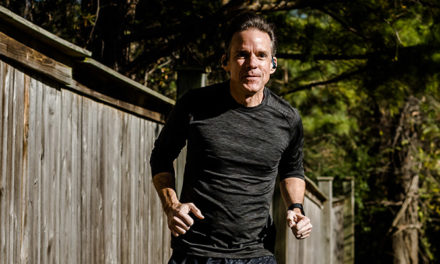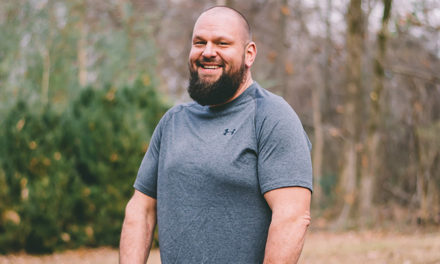Health and fitness start at home for 32-year-old Charles Hogan. He and his wife Sarah, who was a collegiate volleyball player, make working out a big part of their lives. Charles and his eight-year-old son, Andy, stay active together. “Instead of sitting around on the couch, we play ball outside,” he says. Andy is already following in his father’s footsteps; they both practice martial arts.
While at the University of Memphis, Charles was a competitive kickboxer. Some would say it’s serendipity that led him to a chiropractor’s office, but in reality, it was simply a lot of pain.
When he got injured, he continued to train despite a sprained disc in his back, but the pain intensified. Charles wanted to avoid surgery that would keep him out of the gym for extended time. “I didn’t know where to turn, but I figured chiropractors were back doctors so I went to one.”
Like most people who have never done chiropractic, he was apprehensive but walked out feeling significantly better. With follow-up appointments, his injury healed faster than expected and he was back to competing. Charles graduated with a degree in Exercise Science, but his injury is what set him on his path to becoming a doctor of chiropractic.
In addition to being a board-certified Certified Chiropractic Sports Physician, he has a master’s degree in Sports Science and Rehabilitation and post-graduate training in nutrition, functional neurology, and orthopedic rehab. He took over Memphis Spine & Sport in 2016 to serve the community and also works with the city’s new soccer team, Memphis 901 FC.
Though he has a strong background in sports medicine, he regularly sees patients from all walks of life. “We treat all body parts, from headaches to foot pain and everything in between,” he says. “Our treatment is a very gentle process. My youngest patient is nine weeks old and my oldest is 89.”
When a patient comes to Memphis Spine & Sport, they are introduced the practice and the process before they ever get on a table. “In addition to the standard history and physical, each new patient gets a neuro and ortho exam, as well as a movement study that includes digital gait analysis on the treadmill.” Treatment begins during the following appointment when they go over the medical findings and plan for recovery.
Dr. Hogan’s youngest patient was referred to him by a pediatrician. The baby was having a lot of colic and was exceptionally fussy and not eating. “Our method for treating children is dramatically different. It sometimes doesn’t look like we’re doing much, but after the baby’s adjustment, he was sleeping and eating better with less fussiness.”
When the spine is out of alignment, it affects the body in other areas from sinuses to sleep, energy, mood, and more,” Charles says. With medical costs on the rise, people are starting to understand the importance of preventative care, such as chiropractic. The doctor says, “Insurance companies are picking up on this, and we get a lot of referrals from them.”
More and more people are including chiropractic into their wellness maintenance. “There’s an old myth that you have to keep going to a chiropractor forever, but that’s not true. It’s like any other maintenance. We maintain our teeth and we maintain our cars. Likewise, our quality of life is best when we maintain our bodies,” he says. The cadence of visits differs for everyone. Some patients see him monthly, while others come in more often or less.
In order to take care of his patients, Dr. Hogan has to take care of himself. “Because of what I do for a living, I incorporate a lot of injury prevention exercises into my workouts. I use a lot of free weights and incorporate balance balls and exercise balls as much as possible. When I’m not kickboxing you can catch me in the gym doing a lot of strength training and stability work.” He, of course, gets regular chiropractic care as well.
New patients typically come in with a primary complaint but notice secondary benefits from their treatment. “Pain, stiffness, and other medical issues that impact quality of life often come on gradually. People who have low-level pain and discomfort usually live with it for so long they stop noticing it. They forget how much better they are supposed to feel.”
In addition to treatment, Dr. Hogan sends patients home with ergonomic advice and tips about strengthening the important muscles that hold the spine and neck in proper alignment. “As long as your shoulder blades are strong and your hips are strong, you should be able to move and do whatever you want to do,” he says. In addition to exercise and proper ergonomics, he recommends a diet low in sugar and inflammatory foods, such as carbohydrates and dairy. “What matters most is lifestyle,” he says. “With fitness, as with diet, you have to educate yourself, and then go on to find healthy things that you really like and enjoy them.”
By Caroline Sposto.
Photo by Tindall Stephens.







